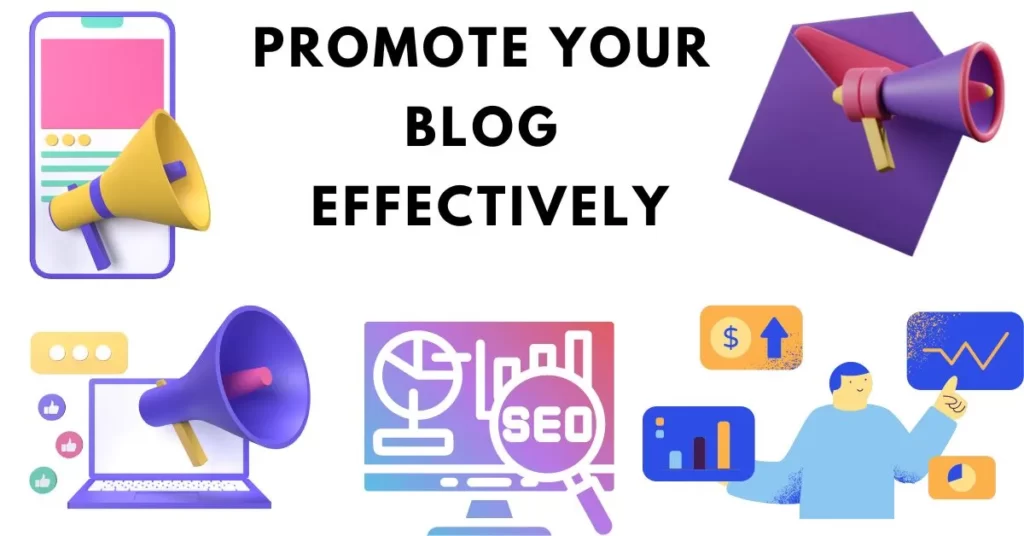
The key to a successful blog can be summed up in two essential elements: quality content and effective promotion. Crafting well-researched, informative, and engaging posts is crucial to attract and retain readers.
By offering valuable insights, practical tips, or entertaining stories, you can establish yourself as an authority in your niche. However, creating excellent content alone is not enough.
Effective promotion is equally vital. Sharing your blog posts through social media, utilizing search engine optimization techniques, and engaging with your audience helps increase visibility and attract new visitors.
By striking a balance between exceptional content creation and strategic promotion, you can unlock the door to a thriving blog.
So, “What is the key to a successful blog?“
Here are some of the points for a successful blogging.
Table of Contents
Expertise

To build a successful blog, establishing yourself as an expert in your chosen niche is paramount. Readers are naturally drawn to blogs that provide valuable and reliable information. Here are some strategies to effectively demonstrate your expertise:
In-depth Research: Conducting thorough research is the foundation of creating informative content. Invest time in exploring your chosen topic, delving into various reliable sources, and staying up-to-date with the latest trends and developments. By presenting well-researched and accurate information, you can position yourself as a knowledgeable authority.
Quality Content: A successful blog relies on producing high-quality content that engages and educates your readers. Focus on crafting articles that offer unique insights, address common pain points, and provide practical solutions. By delivering valuable information, you can establish yourself as a go-to resource within your niche.
Showcasing Credentials: Building trust and credibility is essential for establishing yourself as an expert. Share your relevant credentials, qualifications, and experience with your audience.
This could include highlighting your professional background, industry certifications, relevant degrees, or notable achievements. By showcasing your expertise through your credentials, you strengthen your authority and reassure readers of your competence.
Engagement and Interaction: Actively engage with your audience by encouraging comments, answering questions, and participating in discussions. This interaction demonstrates your commitment to providing valuable insights and fosters a sense of community. Engaged readers are more likely to trust your expertise and become loyal followers of your blog.
Consistency: Consistency in delivering valuable content is key to maintaining your expert status. Regularly publish blog posts that showcase your expertise, ensuring that your readers can rely on you for up-to-date information and insights. By consistently delivering valuable content, you solidify your reputation as an expert within your niche.
By implementing these strategies, you can effectively demonstrate your expertise and establish yourself as a trusted and knowledgeable resource within your chosen niche, ultimately contributing to the success of your blog.
Authoritativeness
Establishing authority is crucial for building trust and credibility. When readers perceive you as an authoritative figure, they are more likely to value and trust your content. Here are strategies to boost your blog’s authoritativeness:
Consistency: Consistency is key to maintaining authority. Regularly publishing high-quality content demonstrates your dedication and reliability. Establish a consistent posting schedule to keep your readers engaged and coming back for more. Consistency builds trust and reinforces your position as a reliable source of information.

Backed by Research: Support your claims with reputable sources, studies, and data. When you incorporate evidence and credible references into your blog posts, you enhance your credibility and provide readers with valuable insights. Backing up your content with research shows that you are committed to providing accurate and well-substantiated information.
Guest Blogging and Collaborations: Collaborate with other authoritative bloggers and industry experts through guest blogging or collaborative projects.
By associating yourself with established and respected figures in your niche, you tap into their credibility and expand your reach. Guest blogging allows you to showcase your expertise to a new audience, further solidifying your authority in the field.
Building authoritativeness takes time and effort, but it pays off by establishing you as a trusted voice in your niche. Consistently delivering high-quality content, supporting your claims with research, and collaborating with other authorities will help you gain recognition and become a go-to resource for readers seeking reliable information.
Trustworthiness
Trust is the foundation of a successful blog. Earning the trust of your audience fosters long-term relationships and encourages engagement. Here are strategies to establish trust:

Transparency: Be transparent about your motives, affiliations, and any potential conflicts of interest. Disclose sponsored content, affiliate links, or any other forms of partnerships or collaborations.
This transparency ensures that your readers understand your intentions and that you prioritize their interests above any financial or personal gain. Honesty and openness go a long way in building trust.
Engage with Readers: Actively engage with your readers by encouraging comments, responding to feedback, and participating in conversations. Show genuine interest in their thoughts and opinions.
By engaging in meaningful interactions, you create a sense of community and demonstrate that you value and respect your readers’ perspectives. This engagement fosters trust and loyalty.
Social Proof: Display testimonials, user reviews, or case studies that showcase positive experiences from your readers or clients. Social proof serves as evidence that your blog has provided value to others and that their trust in you was well-placed.
Highlighting real-life examples of how your content has benefited others can significantly enhance your credibility and build trust with new visitors.
Building trust is an ongoing process that requires consistent effort. By being transparent, actively engaging with your audience, and showcasing social proof, you create an environment where readers feel confident in relying on your blog as a trustworthy source of information.
Trustworthy blogs not only attract a loyal following but also inspire readers to share your content and recommend your blog to others, further expanding your reach and impact.
Engaging User Experience
Creating an engaging user experience is crucial for keeping visitors on your blog and encouraging them to explore more of your content. A positive user experience enhances their overall satisfaction and increases the likelihood of repeat visits. Here are some strategies to enhance user experience on your blog:
Clear and Intuitive Navigation: Design your blog with a clean and user-friendly navigation menu. Make it easy for visitors to find the information they’re looking for by organizing your content into logical categories and using clear labels. Consider including a search function to further assist users in finding specific topics or articles of interest.
Mobile Responsiveness: With the increasing use of mobile devices, it’s essential to optimize your blog for mobile viewing. Ensure that your blog is mobile-responsive, meaning it adapts seamlessly to different screen sizes and maintains its functionality and readability on smartphones and tablets. This way, you cater to the needs of mobile users and provide a positive experience regardless of the device they use.
Fast Loading Speed: Slow-loading websites can lead to user frustration and high bounce rates. Optimize your blog’s loading speed by minimizing large file sizes, leveraging caching techniques, and choosing a reliable hosting provider. A fast-loading blog improves the overall user experience and encourages visitors to stay and explore your content.
Visually Appealing Design: Invest in a visually appealing design that aligns with your brand and target audience. Use a balanced combination of colors, fonts, and imagery that complement your content and enhance readability. Avoid cluttered layouts or distracting elements that may detract from the user experience. A visually pleasing blog design creates a positive impression and entices visitors to engage with your content.

Multimedia Integration: Enhance your blog posts by incorporating multimedia elements such as images, videos, infographics, or audio clips. These elements help break up the text, make your content more engaging, and cater to different learning preferences. However, ensure that multimedia files are optimized for fast loading and do not hinder the overall user experience.
Readability: Pay attention to the readability of your blog posts. Use clear and concise writing, break up text into smaller paragraphs, and utilize headings, subheadings, and bullet points to improve scannability. Consider using a legible font size and typeface that is easy to read across different devices. Improving readability makes your content more accessible and encourages visitors to delve deeper into your articles.
By prioritizing user experience, you create a blog that is enjoyable and easy to navigate, ultimately keeping visitors engaged and increasing the likelihood of them returning in the future. A positive user experience contributes to the overall success of your blog by encouraging longer visits, reducing bounce rates, and fostering a loyal readership.
Effective Promotion

Promotion plays a vital role in driving traffic to your blog and expanding your audience. Even if you have excellent content, it won’t reach its full potential without effective promotion. Here are some strategies to promote your blog effectively:
Social Media Marketing: Leverage social media platforms to promote your blog and engage with your target audience. Create profiles on relevant platforms such as Facebook, Twitter, Instagram, LinkedIn, or Pinterest, depending on your niche and target demographic.
Share your blog posts, interact with followers, participate in relevant discussions, and use hashtags to increase visibility. Encourage social sharing by incorporating social sharing buttons on your blog posts.
Search Engine Optimization (SEO): Optimize your blog for search engines to improve its visibility in search results. Conduct keyword research to identify relevant keywords and incorporate them naturally into your blog posts, titles, headings, and meta descriptions.
Pay attention to on-page SEO elements such as meta tags, alt tags for images, and URL structure. Build high-quality backlinks from reputable websites to boost your blog’s authority and search engine rankings.
Email Marketing: Build an email list by offering valuable content upgrades, such as e-books, checklists, or exclusive guides, in exchange for visitors’ email addresses. Send regular newsletters or updates to your subscribers, featuring your latest blog posts, upcoming events, or exclusive content. Email marketing allows you to maintain direct communication with your audience and drive traffic back to your blog.
Collaborations and Guest Posting: Collaborate with other bloggers or influencers in your niche through guest posting or collaborative projects. Write high-quality guest posts for established blogs, including a link back to your own blog. This strategy exposes your content to a new audience and can significantly increase your visibility and credibility within the industry.
Promote through Online Communities: Participate in online communities and forums relevant to your niche. Provide value by answering questions, offering insights, and sharing relevant blog posts when appropriate.
Be mindful of the community guidelines and avoid spamming or self-promotion. By becoming an active and respected member of these communities, you can establish yourself as an authority and attract new readers to your blog.
Cross-Promotion: Collaborate with other bloggers or content creators within your niche to cross-promote each other’s content. This can involve featuring each other’s blog posts, sharing each other’s social media content, or even hosting joint webinars or podcasts. Cross-promotion allows you to tap into each other’s audience and expand your reach.
Promotion is an ongoing process that requires consistent effort. Experiment with different promotion strategies, track your results and adapt your approach based on what works best for your blog and audience. By effectively promoting your blog, you can attract a steady stream of traffic, grow your readership, and increase the overall success of your blog.
Conclusion on What is the key to a successful blog?
In conclusion, the key to a successful blog is a combination of high-quality content and effective promotion. By creating valuable, well-researched, and engaging posts, you can attract and retain readers.
Simultaneously, promoting your blog through various channels like social media, SEO, and collaborations helps increase visibility and reach a wider audience. Consistency, dedication, and a focus on providing value are crucial in building a thriving blog.

